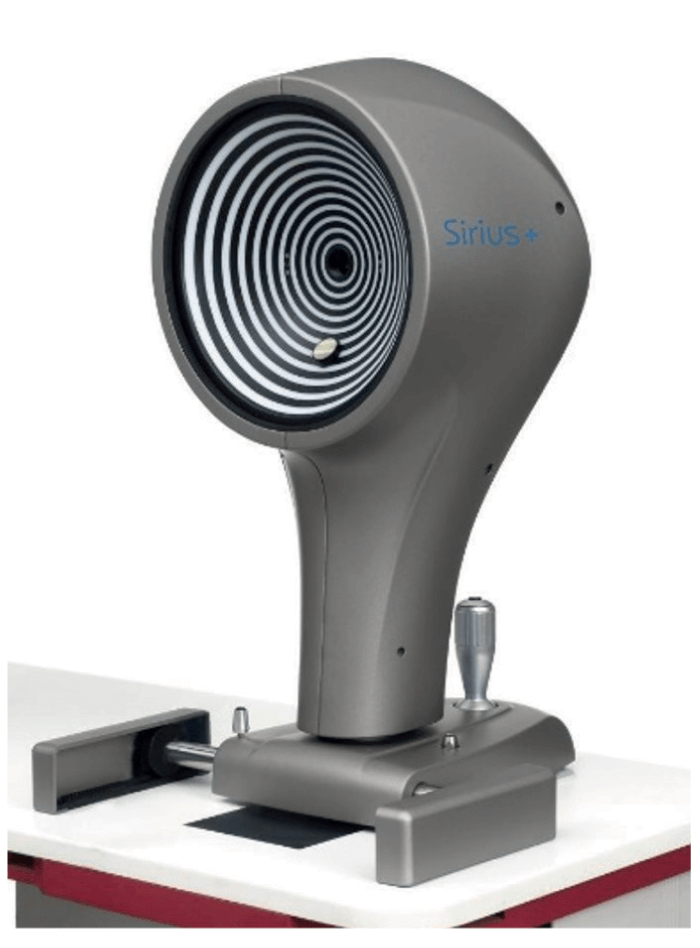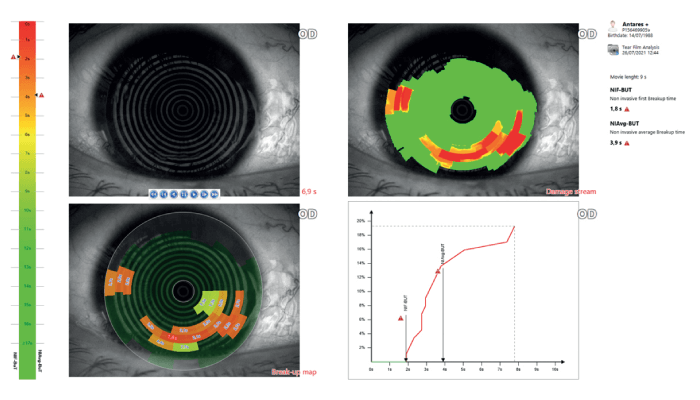
My background is in optometry and I have been working in clinical practice for around 30 years. I have also been involved in research and I am currently based at the University of Milan after doing research at Aston University in Birmingham, UK, for three years.
I extensively used the first-generation of Antares topographers when they came on to the market – I purchased my first topographer around 1997. It’s incredible to see how the technology has improved in recent years, making it possible for us to get access to instruments like Sirius+ and Antares+. I have found these devices, and technology they use, to be truly unique in the market.
The biggest advantages
I use CSO Italia’s instruments – especially Sirius+, a device in which Scheimpflug tomography is integrated with a corneal topographer – in my research lab in Milan, as it is incredibly informative when assessing the anterior segment. Not only do Sirius+ and Antares+ provide a wealth of data on corneal topography, aberrometry, tear film, and more, but they also offer great usability. The devices use the same software platform, which is very user friendly, and requires very little training before gaining proficiency. The instruments are also extremely reliable, providing accurate measurements time after time. Your specific practice needs will dictate whether Sirius+ or Antares+ is the right instrument for you (Sirius+ will be useful for detailed glaucoma patient assessment), but in my opinion, they are both the best devices in their class, boasting a unique combination of features and functionalities.
As I have a keen interest in lens materials, and providing the best quality of vision to patients, I have been really interested in the aberrometry and pupillography capabilities of CSO Italia’s instruments. Looking at aberrations is crucial, especially when managing a post-op patient with keratoconus or corneal ectasia, and I can’t fault the ability of the Sirius+ and Antares+ to produce best-in-class aberrometric analysis and pupillography.

Assessing the ocular surface
Ocular surface disease, including dry eye, is a hot topic in ophthalmology and optometry nowadays, and modern eye care practitioners need instruments that allow them to perform the best possible dry eye disease assessment. Accurate evaluation of the patient’s ocular surface has a huge impact on any decisions that an eyecare professional makes, such as choosing a contact lens material, as any disregarded issues will have an impact on the patient’s outcomes, and – ultimately – their quality of life and satisfaction.
Sirius+ and Antares+, with the use of the Dry Eye Report, allow clinicians to assess more than one aspect of the ocular surface, covering Meibomian gland analysis, tear meniscus analysis, limbal and conjunctival hyperemia, and NIBUT, using non-invasive methods. Having access to all of this information together helps the practitioner make a very detailed and accurate assessment of the ocular surface condition.
As a contact lens practitioner, I know that – according to literature – around 50 percent of all contact lens wearers complain about dry eye and the discomfort they get from it (1). That’s why it is so vital to try to have access to accurate ocular surface assessment, and Sirius+ and Antares+ allow me to perform a precise ocular surface analysis really easily.
References
- JJ Nichols et al., The TFOS International Workshop on Contact Lens Discomfort: executive summary,” Invest Ophthalmol Vis Sci, 54 (2013). PMID: 24058135.
